Irish Hill |
|||||||||||||
 |
 |
||||||||||||
Crocheted sweater for men in DROPS Air. The piece is worked top down with raglan, cables and long sleeves. Size S - XXXL.
DROPS 246-5 |
|||||||||||||
|
------------------------------------------------------- EXPLANATIONS FOR THE PATTERN: ------------------------------------------------------- CHAIN STITCH: If you work outermost on the hook the chain stitch will often be too tight; 1 chain stitch should be as long as 1 double crochet is wide. CROCHET INFORMATION-1: At the beginning of each round of half-double/double crochets work 2/3 chain stitches which replace the first half-double/double crochet. The round finishes with 1 slip stitch in the second/third chain stitch at the beginning of the round. CROCHET INFORMATION-2 (working round and round): On the body and sleeves you work in the round but without finishing at the end of each round; the beginning of the round will be displaced as you work. Round 1 is not finished in the normal way but the first double crochet at the beginning of round 2 is worked in the first double crochet on round 1. Then continue working 1 double crochet in each double crochet. On the sleeve, a marker-thread is inserted mid-under the sleeve between 2 stitches. On the body a marker-thread is inserted on the side, where the round started. Allow these threads to follow your work onwards, keeping them vertically in line on both the sleeve and the body. Lay the garment flat so you can check the markers are still in the correct position. On the last round at the bottom of the body and sleeves, work as follows to prevent a jog at the end of the round: Work until there are 2 double crochets left, work 1 half-double crochet in the next double crochet, 1 double crochet in the last double crochet and finish the round with 1 slip stitch in the first double crochet at the beginning of the round. PATTERN: See diagram A.1. RAGLAN: Increase for raglan by working several double crochets in the first/last double crochet in A.1. The increased stitches are continued with double crochets. DECREASE TIP-1 (sleeves): The marker-thread sits between 2 double crochets under the sleeve. Decrease as follows on each side of the marker-thread: Work until there are 3 double crochets left before the marker-thread, work 2 double crochets together as follows: * Make 1 yarn over, insert the hook into the next stitch, pick up the strand, make 1 yarn over and pull it through the first 2 loops on the hook *, work from *-* 1 more time, make 1 yarn over and pull it through all 3 loops on the hook (1 stitch decreased). Work 1 double crochet in each of the next 2 double crochets (marker-thread sits between these 2 stitches), repeat from *-* 1 more time. DECREASE TIP-2 (neck): Decrease by working 2 double crochets together as follows: * Make 1 yarn over, insert the hook into the next stitch, pick up the strand, make 1 yarn over and pull it through the first 2 loops on the hook *, work from *-* 1 more time, make 1 yarn over and pull it through all 3 loops on the hook (1 stitch decreased). ------------------------------------------------------- START THE PIECE HERE: ------------------------------------------------------- SWEATER - SHORT OVERVIEW OF THE PIECE: The yoke is worked in the round, from mid-back and top down. The yoke is divided for the body and sleeves, which are then finished separately. The neck is worked in the round to finish. YOKE: Use crochet hook size 5 MM = US H/8 and DROPS Air. Read CHAIN STITCH in explanations above. Work 72-76-78-82-86-90 slightly loose chain stitches and form them into a ring with 1 slip stitch in the first chain stitch. Read CROCHET INFORMATION-1 and work 1 half-double crochet in each chain stitch = 72-76-78-82-86-90 half-double crochets. Continue in the round as follows: Work double crochets over the first 8-9-9-10-11-13 stitches (approx. half back piece), A.1 over the next 2 stitches (raglan), double crochets over the next 16 stitches (sleeve), A.1 over the next 2 stitches (raglan), double crochets over the next 16-18-19-21-23-26 stitches (front piece), A.1 over the next 2 stitches (raglan), double crochets over the next 16 stitches (sleeve), A.1 over the next 2 stitches (raglan), double crochets over the last 8-9-10-11-12-13 stitches (half back piece). Insert a marker in the middle of the round (mid-front), the yoke is measured from here. Continue with double crochets and A.1, AT THE SAME TIME increase for RAGLAN on the first round – read description above, working as follows: Work to A.1 (between back piece and sleeve), work 3 double crochets in the first double crochet and 2 double crochets in the last double crochet in A.1, work to next A.1 (between sleeve and front piece), work 2 double crochets in the first double crochet and 3 double crochets in the last double crochet in A.1, work to next A.1 (between front piece and sleeve), work 3 double crochets in the first double crochet and 2 double crochets in the last double crochet in A.1, work to the next A.1 (between sleeve and back piece), work 2 double crochets in the first double crochet and 3 double crochets in the last double crochet in A.1, work to end of round. 4 stitches increased on the back and front pieces and 2 stitches increased on each sleeve = 12 increases on the round. Repeat these increases every round for a total of 6-6-5-7-8-9 times = 144-148-138-166-182-200 double crochets. REMEMBER THE CROCHET GAUGE! Now increase just 2 stitches on the front and back pieces and continue the sleeve increases as before, working as follows: Work to A.1 (between back piece and sleeve), work 2 double crochets in the first double crochet and 2 double crochets in the last double crochet in A.1, work to next A.1 (between sleeve and front piece), work 2 double crochets in the first double crochet and 2 double crochets in the last double crochet in A.1, work to next A.1 (between front piece and sleeve), work 2 double crochets in the first double crochet and 2 double crochets in the last double crochet in A.1, work to the next A.1 (between sleeve and back piece), work 2 double crochets in the first double crochet and 2 double crochets in the last double crochet in A.1, work to end of round. 2 stitches increased on the front and back pieces and 2 stitches increased on each sleeve = 8 increases on the round. Repeat these increases every round 7-10-12-12-11-12 times, a total of 13-16-17-19-19-21 times on the front and back pieces and sleeves = 200-228-234-262-270-296 double crochets. The sleeve increases are finished. Continue increasing on the front and back pieces 2-0-2-0-1-1 more times, a total of 15-16-19-19-20-22 times on the front and back pieces and 13-16-17-19-19-21 times on the sleeves = 208-228-242-262-274-300 double crochets. Continue working as before without further increases until the yoke measures 19-21-22-24-26-29 cm = 7½"-8¼"-8¾"-9½"-10¼"-11⅜" from the marker. Fasten the last stitch on the round with a marker or thread so it doesn’t unravel – the hook is now used to cable together the chain-stitch loops in each A.1. Work as follows: Insert the hook, from the right side, down into the first chain-stitch loop by the neck, pull the second chain-stitch loop through the first, insert the hook down into the 2nd chain-stitch loop and pull the third chain-stitch loop through the second. Continue like this until all the loops are cabled together. Repeat on all raglan-lines. Insert a marker or a thread in the last loop on each line so it doesn’t unravel. Work the next round from where the round finished on the yoke as follows: (The chain-stitch loops in A.1 are not counted in the stitch count; 1 double crochet is worked around the last chain-stitch loop in each cable so it doesn’t unravel and this double crochet is skipped on the next round): Work double crochets over the first 29-31-33-36-39-44 double crochets, work 1 double crochet in the first double crochet in A.1, work 1 double crochet around the chain-stitch loop, 1 double crochet in the last double crochet in A.1, work 6-6-8-8-10-10 loose chain stitches (= under sleeve), skip the next 42-48-50-54-54-58 double crochets (= sleeve), work 1 double crochet in the first double crochet in A.1, work 1 double crochet around the chain-stitch loop, 1 double crochet in the last double crochet in A.1, work 1 double crochet in each of the next 58-62-67-73-79-88 double crochets, work 1 double crochet in the first double crochet in A.1, work 1 double crochet around the chain-stitch loop, 1 double crochet in the last double crochet in A.1, work 6-6-8-8-10-10 loose chain stitches (= under sleeve), skip the next 42-48-50-54-54-58 double crochets (= sleeve), work 1 double crochet in the first double crochet in A.1, work 1 double crochet around the chain-stitch loop, 1 double crochet in the last double crochet in A.1, work 1 double crochet in each of the last 29-31-34-37-40-44 double crochets. Cut and fasten the strand. The body and sleeves are finished separately. BODY: Start in the 3rd-3rd-4th-4th-5th-5th chain stitch worked under one sleeve. Fasten the strand and work 1 double crochet in this chain stitch, work 1 half-double crochet in the next chain stitch, work 1 double crochet in each of the remaining stitches. NOTE! Do not finish the round as usual - read CROCHET INFORMATION-2 = 136-144-158-170-186-204 double crochets. Work 1 double crochet in each double crochet until the piece measures 37-37-38-38-38-37 cm = 14½"-14½"-15"-15"-15"-14½" from the division - remember CROCHET INFORMATION-2 when working the last round. Cut and fasten the strand. The sweater measures approx. 62-64-66-68-70-72 cm = 24⅜"-25¼"-26"-26¾"-27½"-28⅜" from the shoulder. SLEEVES: Start in the 3rd-3rd-4th-4th-5th-5th chain stitch worked under one sleeve. Fasten the strand and work 1 double crochet in this chain stitch, work 1 half-double crochet in the next chain stitch, work 1 double crochet in each of the next 0-0-1-1-2-2 chain stitches (1 chain stitch left), work 2 double crochets together as follows: work 1 double crochet in the last chain stitch but wait with the last yarn over and pull-through, work 1 double crochet like this in the transition between body and sleeve, make i yarn over and pull it through all 3 loops on the hook. This avoids a gap between the body and sleeve. Work 1 double crochet in each double crochet as far as the chain stitches under the sleeve, work 2 double crochets together in the transition between sleeve and body and work 1 double crochet in each of the remaining chain stitches - remember CROCHET INFORMATION-2 = 48-54-58-62-64-68 double crochets. Work 1 double crochet in each double crochet until the sleeve measures 4-4-3-3-3-2 cm = 1½"-1½"-1⅛"-1⅛"-1⅛"-¾". Now start to decrease under the sleeve – read DECREASE TIP-1. Decrease every 8-5½-5-3½-3½-2½ cm = 3⅛"-2⅛"-2"-1¼"-1¼"-1" a total of 6-8-9-11-11-13 times = 36-38-40-40-42-42 stitches. Work 1 double crochet in each double crochet until the sleeve measures 51-50-49-48-46-43 cm = 20"-19¾"-19¼"-19"-18"-17" - remember CROCHET INFORMATION-2 when working the last round. Work the other sleeve in the same way. DOUBLE NECK: Use hook size 5 MM = US H/8 and DROPS Air. Start mid-back. ROUND 1: Work 1 double crochet between each half-double crochet from round 1 on the yoke = 72-76-78-82-86-90 double crochets – read CROCHET INFORMATION-1. ROUND 2: Work double crochets in the back loops of all stitches. ROUND 3: Work double crochets (through both loops) of all stitches. ROUND 4: Work double crochets in the back loops of all stitches. ROUND 5: Work double crochets (through both loops) of all stitches. ROUND 6: Work double crochets in the back loops of all stitches. ROUNDS 7-9: Work double crochets (through both loops) of all stitches. Cut the strand and pull it through the last loop. ASSEMBLY: Fold the neck double to the inside and sew down with a couple of stitches. |
|||||||||||||
Diagram explanations |
|||||||||||||
|
|||||||||||||

|
|||||||||||||
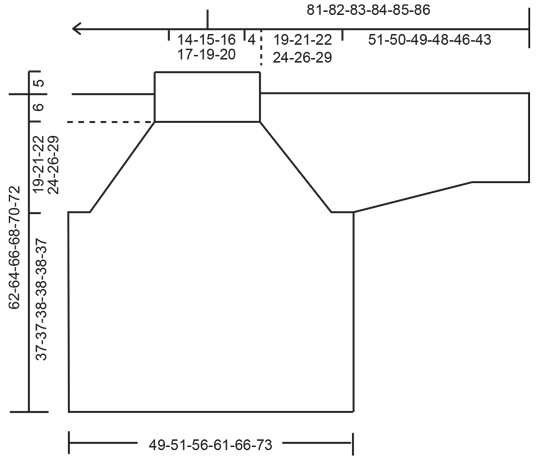
|
|||||||||||||
|
Have you made this or any other of our designs? Tag your pictures in social media with #dropsdesign so we can see them! Do you need help with this pattern?You'll find tutorial videos, a Comments/Questions area and more by visiting the pattern on garnstudio.com. © 1982-2024 DROPS Design A/S. We reserve all rights. This document, including all its sub-sections, has copyrights. Read more about what you can do with our patterns at the bottom of each pattern on our site. |
|||||||||||||








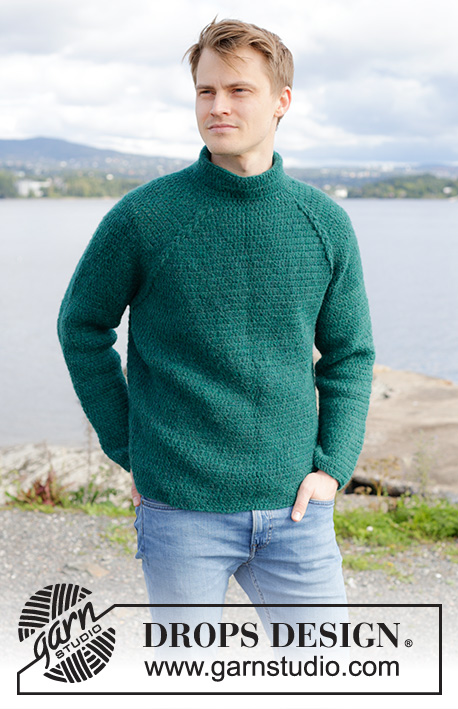
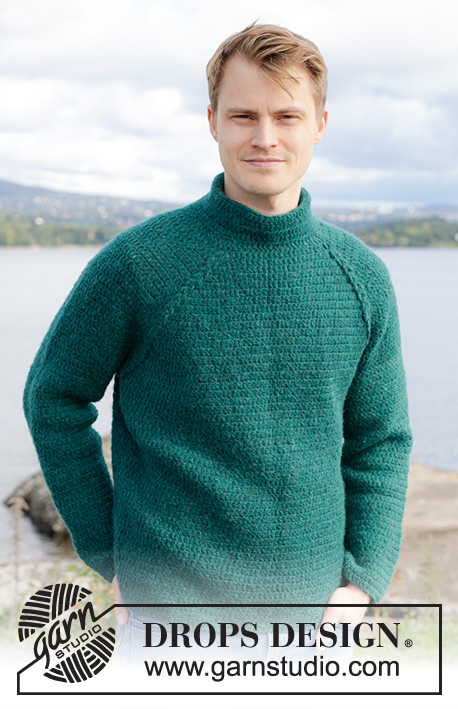


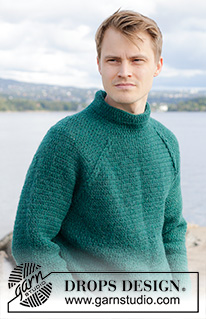
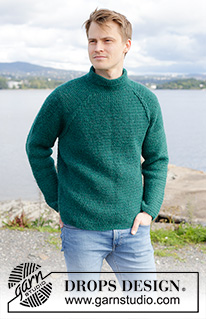









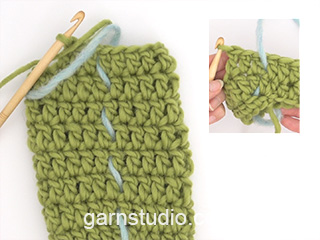
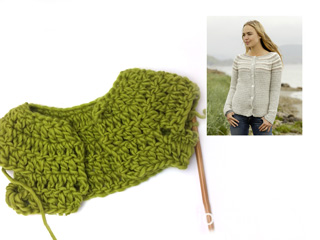
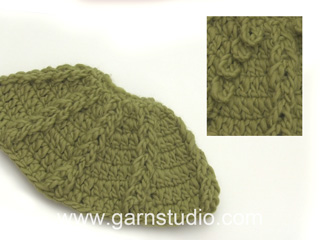

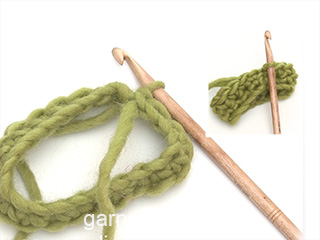























Comments / Questions (2)
Hallo liebes Team! Ich möchte den Pulli in der Größe L häkeln. Beim Passe schaut es so aus, als ob am Ende ein Fehler in dieser Größe ist: die Zunahme und die Anzahl der Runden für L ist kleiner als M und S --> 144-148-138 (= Größe L) -166-182-200 Stäbchen. Können Sie mir sagen, wie die Anleitung richtig geht? Danke
02.01.2024 - 09:45DROPS Design answered:
Liebe Cici, so stimmt es auch, die Zunahmen sind noch nicht fertig, Sie haben nur 5 Mal genommmen (6 Mal in die 2 ersten Größen), dann nehmen Sie wie unter den nächsten Absatz zu. Am Ende der Passe sind es dann 242 Stäbchen in L. Viel Spaß beim häkeln!
02.01.2024 - 12:31Bonjour je voudrais savoir quand le graphique A1 et les arceaux doit t'on commencer à les tricoter je suis bloquée pour la suite du patron merci d'avance de votre réponse
31.10.2023 - 11:12DROPS Design answered:
Bonjour Mme Rezig, nous montrons dans cette vidéo comment crocheter ce type de points (suivez bien les explications sur le nombre de mailles, la vidéo a été faite pour un autre modèle similaire); elle montre ainsi comment crocheter les ronds de mailles en l'air de l'empiècement et comment les assembler ensuite en torsades à la fin de l'empiècement. Bon crochet!
31.10.2023 - 16:13